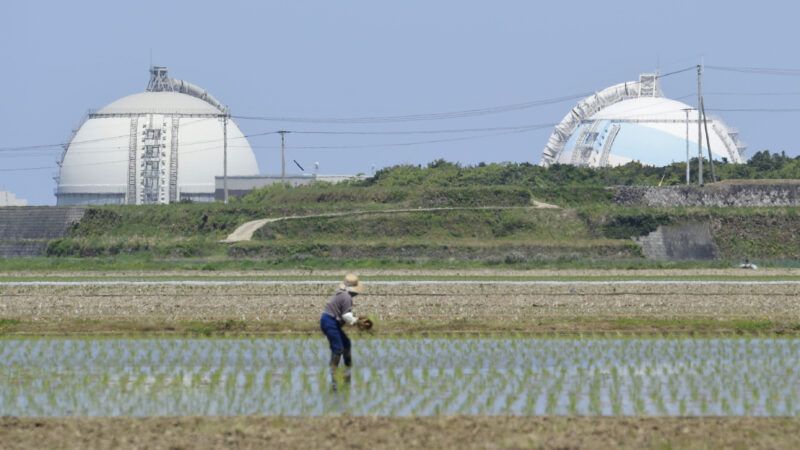Japan Is Reopening Nuclear Power Plants and Planning To Build New Ones
If Japan can get over its anti-nuclear Fukushima freak out, then the rest of the world should too.

Rationality about nuclear power seems to be breaking out across the globe over the past month. First, Germany announced as a response to Russia's natural gas blackmail that it will keep open three perfectly good nuclear power plants that it was planning to shut down this year. Germany has already closed 14 other plants in an absurd overreaction to the 2011 Fukushima meltdowns caused by a giant tsunami hitting those coastal nuclear power plants.
Even la-la land politicians have begun to realize that running California using electricity generated solely from unreliable wind and solar power is a fantasy. Democratic Gov. Gavin Newsom has now proposed a plan to keep the Golden State's only remaining nuclear power plant at Diablo Canyon operating for at least another 10 years. That plant currently generates enough electricity to meet the needs of nearly 3 million households.
Speaking of Fukushima, according to the Financial Times, Japanese Prime Minister Fumio Kishida has announced that the government plans to allow the restart of at least 10 more of the nuclear power plants it shuttered after the 2011 disaster. In addition, Kishida is pushing for research on and the construction of new safer nuclear plants as a way to protect Japanese consumers from erratic global fossil fuel markets and reduce his country's greenhouse gas emissions. Kishida foresees Japan becoming a major exporter of nuclear generation technology to power hungry developing countries around the world.
The U.S. Nuclear Regulatory Commission (NRC) finally took another tiny step toward nuclear power rationality in late July when it directed its staff to certify NuScale's small modular reactor design for use in this country. It's worth noting that NuScale submitted its application to the NRC on December 31, 2016. As I have earlier reported, at the NRC's stately pace of regulatory reform, the first innovative nuclear reactors designed by American companies may well begin operation in Eastern Europe before they get built in this country.
Show Comments (19)